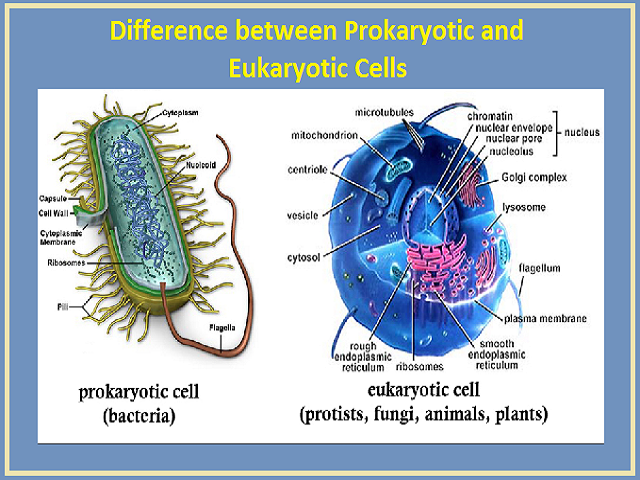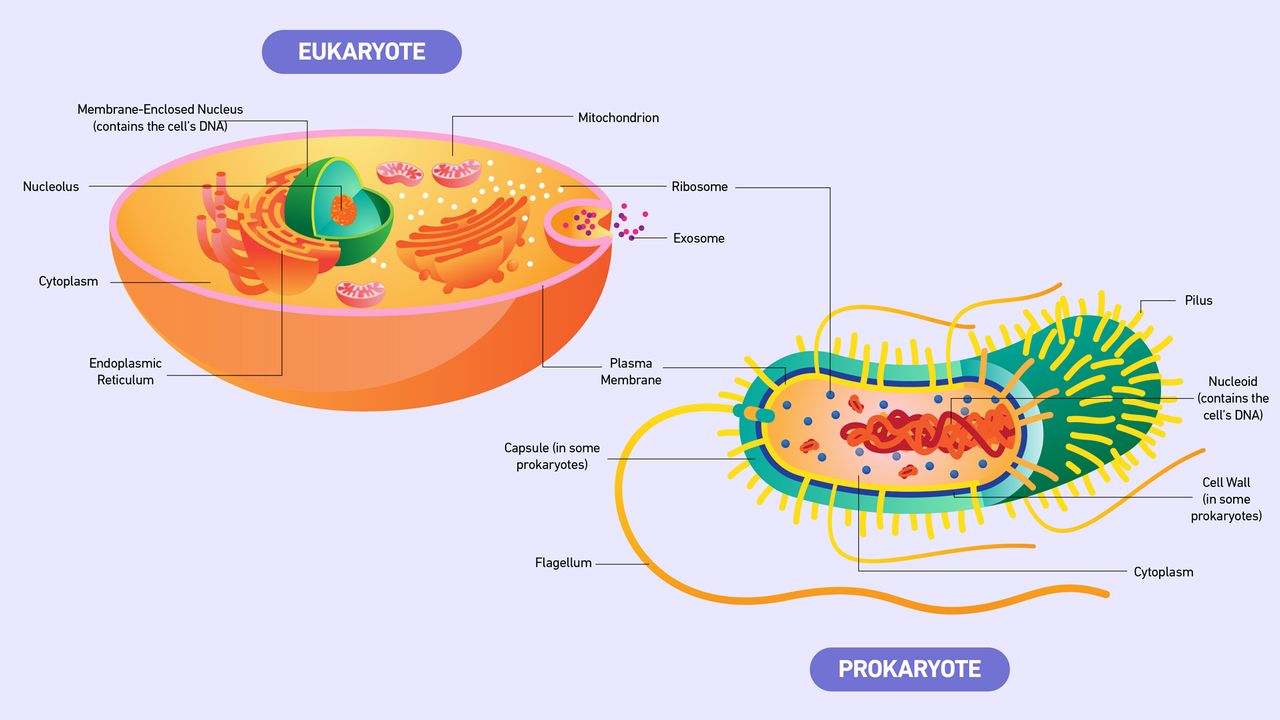The first phylum described is proteobacteria which includes five classes alpha beta gamma delta and epsilon. The cell size is usually small 01 50 um.

What Is The Difference Between Prokaryotic And Eukaryotic Cells
Traditionally the classification of prokaryotes was based on their shape staining patterns and biochemical or physiological differences.

. At 0150 µm in diameter prokaryotic cells are significantly smaller than eukaryotic cells which have diameters ranging from 10100 µm Figure 37. Eukaryotic mitochondria are thought be derived from bacteria in this group. The main difference between the two is the presence of a true nucleus.
In general Prokaryotes range in size from 01 to 50 µm and are considerably smaller than eukaryotic cells. Heres the short answer to prokaryotes vs eukaryotes. The shape of Prokaryotes ranges from cocci bacilli spirilla and vibrio.
At 0150 µm in diameter prokaryotic cells are significantly smaller than eukaryotic cells which have diameters ranging from 10100 µm Figure 2. A prokaryotic cell has one envelope organisation. Eukaryotic cells have a central nucleus While prokaryotes dont Also the eukaryotic cell divide differently than prokaryotic cells.
Eukaryotes as well as protists a miscellany group made up of eukaryote-like plant animal and fungi missing one or more characteristics to be defined as purely eukaryotic differ greatly from prokaryotes in structure. The main difference between prokaryotic and eukaryotic cell division is that the prokaryotic cell division occurs through binary fission whereas the eukaryotic cell division occurs either through mitosis or meiosis. Prokaryotes generally have single circular chromosomes where they store their genetic information.
Prokaryotic cells range in diameter from 0150 µm. The difference between Prokaryotic cells and Eukaryotic cells are listed below. From prokaryotes to eukaryotes.
Cell division takes place through mitosis. They range from 10100 μm in diameter and their DNA is contained within a membrane-bound nucleus. In eukaryotes vertebrates dont have a cell wall but plants do.
Furthermore prokaryotic cells lack a nucleus while eukaryotic cells have a nucleus. Like a prokaryotic cell a eukaryotic cell has a plasma membrane cytoplasm and ribosomes but a eukaryotic cell is typically larger than a prokaryotic cell has a true nucleus meaning its DNA is surrounded by a membrane and has other membrane-bound organelles that allow for compartmentalization of functions. Organisms are always unicellular and multicellular.
Living things have evolved into three large clusters of closely related organisms called domains. Prokaryotes divide via using binary fission while eukaryotic cells divide via mitosis. Prokaryotes are organisms that consist of a single prokaryotic cell.
Organisms are always unicellular. Other major differences between prokaryotic and eukaryotic cells are that prokaryotic cells are exclusively unicellular while the same does not apply to eukaryotic cells. More recently as technology has improved the nucleotide sequences in genes particularly rRNA have become an important criterion of microbial classification.
While prokaryotes are always unicellular organisms eukaryotes can be either unicellular or multicellular. For example most protists are single-celled eukaryotes. The upcoming discussion will update you about the differences between Prokaryotic Cells and Eukaryote Cells.
Most prokaryotic cells have a rigid cell wall that surrounds the plasma membrane and gives shape to the organism. The general characteristics of prokaryotic cells are listed below. Only eukaryotes have membrane-bound organelles and a nucleus.
Although this is the most easily recognizable difference there are other important distinctions between the two organisms that can be seen under a microscope. The flagella if present are single stranded and without differentiation of axoneme and sheath. They also have some difference in the number or types of.
However prokaryotic cells with modifications of these shapes are also found in nature. The small size of prokaryotes allows ions and organic molecules that enter them to quickly spread to other parts of the cell. Cell division takes place through binary fission.
Prokaryotes are single-celled organisms that do not have a nucleus or any membrane-bound organelles. In eukaryotes there are many different promoter elements such as TATA box initiator elements GC box CAAT box etc. Eukaryotes are organisms containing eukaryotic cells.
In prokaryotic cells the true nucleus is absent moreover membrane-bound organelles are present only in eukaryotic cells. Most significant is the lack of a nucleus in prokaryotic cells as well as membrane-based organelles found in all eukaryotic cells. They are called.
Eukaryotes are single-celled or multi-celled organisms that do contain a nucleus and membrane-bound organelles. Prokaryotes and eukaryotes are terms used to define types of organisms. Archaea Bacteria and Eukaryota.
Most prokaryotes are unicellular and are either archaea or bacteria. The small size of prokaryotes allows ions and organic molecules that enter them to quickly spread to other parts of the cell. Difference Prokaryotic Cells.
Even though prokaryotes do not have a nucleus they DO contain genetic information. Eukaryotes include larger more complex organisms such as plants and animals. Eukaryotic and prokaryotic promoters are different from each other.
Eukaryotes have one while prokaryotes do not. Their cells are smaller than eukaryotic cells. Eukaryotic cells are found in plants animals fungi and protists.
Archaea and Bacteria are small relatively simple cells surrounded by a membrane and a cell wall with a circular strand of DNA containing their genes. Most species of Alpha Proteobacteria are photoautotrophic but some are symbionts of plants and animals and others are pathogens. In prokaryotes only three types of promoter sequences are found namely -10 promoter s -35 promoter and upstream elements.

Prokaryotes Vs Eukaryotes What Are The Key Differences Technology Networks

Difference Between Prokaryotic And Eukaryotic Cells Fundamental Units Of Life Cbse Biology Youtube

Prokaryotic Vs Eukaryotic Cells Similarities Differences

Eukaryotes Vs Prokaryotes Similarities Differences And Organelles
0 Comments